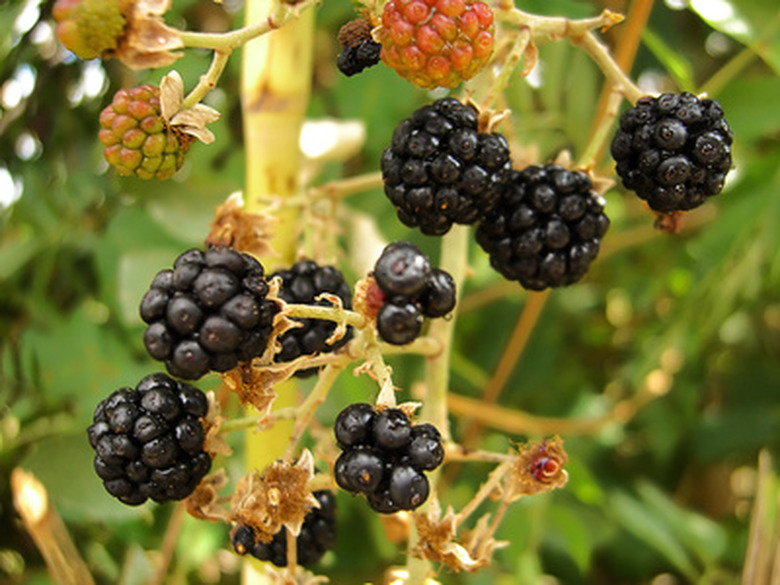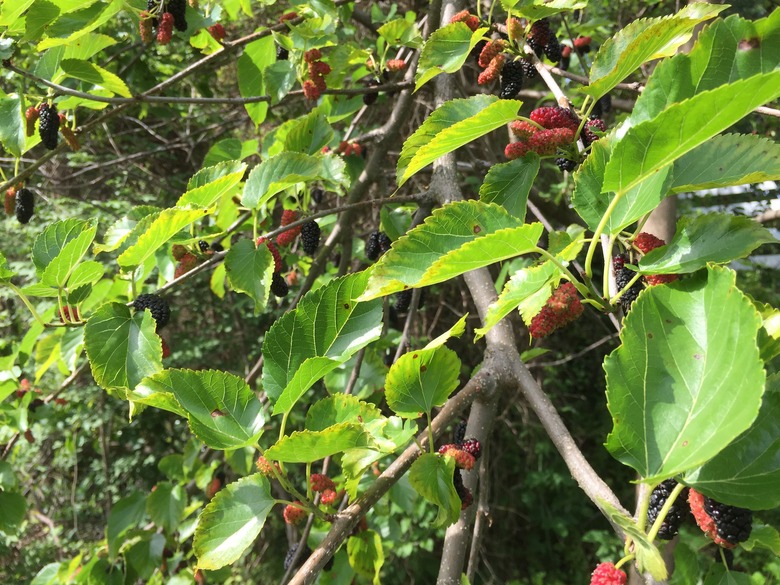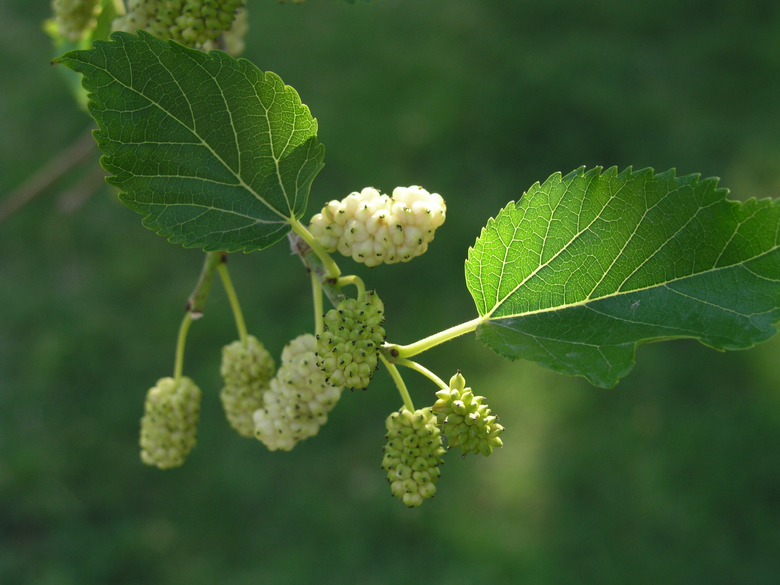What Do Mulberry Tree Leaves Look Like?
Mulberry trees (Morus spp.) are fruit trees in the Moraceae family, which also includes figs and breadfruit. Mulberry fruit look like blackberries and are used to make jams. Mulberry trees of the same species often display a great deal of variety in their leaves.
There are multiple types of mulberry trees, which are hardy in USDA plant hardiness zones 4 to 8. Telling the species apart by looking at the leaf shape and finish is important, however, because at least one of these varieties of mulberry is invasive in much of the U.S.
Red Mulberry Tree Leaves
The leaves of the red mulberry (Morus rubra, zones 4 to 8), which is native to Eastern North America and makes a good shade tree, are dark green in color and slightly heart-shaped with a length of about 5 inches. The leaves are dull and have a rough surface.
Red mulberry leaves may be lobed or unlobed. Lobed leaves are usually a feature of new growth, while unlobed leaves occur in the crown of the tree. The leaves of these trees have finely serrated margins. The underside of a red mulberry tree leaf is often pubescent, which means that it is covered in small hairs.
As a deciduous tree, the fast-growing red mulberry sheds its leaves in the fall. The foliage of this species turns yellow in autumn.
White Mulberry Tree Leaves
The white mulberry tree (Morus alba, zones 4 to 8) is a species native to China. It was introduced in the U.S. in the early 19th century to be a host plant for silkworms in the hopes of jump-starting a silk industry, a goal that did not materialize. However, this tree is considered invasive in many parts of the country, and planting it is not recommended.
Tip
The white mulberry is an invasive species that has naturalized in parts of the U.S.
The leaves of this mulberry species may also be unlobed or lobed. Lobed leaves usually have two or three lobes.
Like the leaves of the red mulberry tree, the leaves of the white mulberry are toothed, though the teeth of white mulberry leaves tend to be larger and have a more rounded shape. Unlike the red mulberry tree, however, the leaves of the white mulberry are shiny, which is one of the easiest ways to tell the species apart.
The underside of white mulberry leaves are less pubescent than those of the red mulberry, and hairs are usually limited to the main veins of the leaves, which are more pronounced than those of the red mulberry. The white mulberry also has a yellow fall color.
Tip
Red mulberry trees have dull leaves, while the leaves of the white mulberry are shiny.
The contorted mulberry (Morus alba 'Unryu,' zones 4 to 8) is a noninvasive cultivar of the white mulberry with gnarled branches. The leaves of this cultivar are a lighter green color than those of the species. The yellow fall color of this cultivar is also considered more attractive than the yellow of the species tree.


